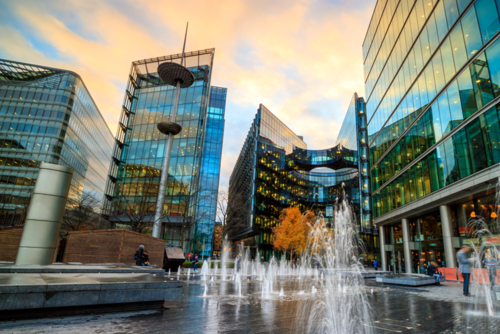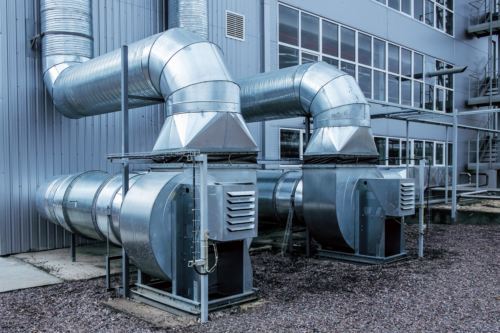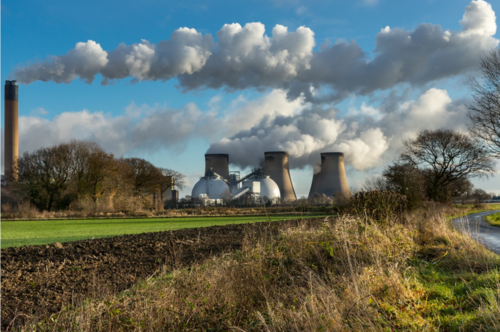CO2 – an essential gas for life on earth but in excess it’s a ticking bomb?
Today, I want to talk more about CO2 in schools. In October 2021, in Air Quality News I talked about our #CleanAirSchools project which is helping local schools monitor and improve their air quality. But today I want to explain in more depth, why CO2 is a problem for our schoolchildren, and indeed all of us, what the consequences are of high CO2 levels indoors, and how we can lower harmful levels of the gas.
Why are CO2 levels rising exponentially?
An excerpt from a paper published at the Yale School of the Environment by Nicola Jones makes stark reading: ‘The 1950s was when man-made emissions really began to take off, going from about 5 billion tons of CO2 per year in 1950 to more than 35 billion tons per year today. Natural sources of CO2, from forest fires to soil and plant respiration and decomposition, are much bigger than that — about 30 times larger than what mankind produces each year. But natural sinks, like plant growth and the oceans, tend to soak that up. The excess produced by mankind’s thirst for energy is what makes the CO2 concentration in the air go up and up. Once in the air, that gas can stay there for millennia.”
And it’s significant that so much carbon dioxide stays in the atmosphere because CO2 is the most important gas for controlling Earth’s temperature. According to a 2011 paper on the Carbon Cycle, published on NASA’s Earth Observatory website, Earth’s temperature will increase at least another 0.6 degrees Celsius (1 degree Fahrenheit) because of carbon dioxide already in the atmosphere. This really highlights the need to reduce carbon emissions from the burning of fossil fuels at every opportunity. As coal, oil, gas and wood are burned they release the carbon they have accumulated and stored over millions of years.
Indoor pollution can be 5 times higher than that outdoors
So, that’s a very short overview on the CO2 emergency, however, this gas, which each person exhales around 24,000 times each day, can also have harmful effects on our health and wellbeing, when it accumulates indoors where we spend 90% of our time.
Workplaces, schools and colleges frequently have very high levels of CO2 as rooms have high occupancy rates for significant periods of time throughout the day. When a classroom is filled with children CO2 levels rise quickly, often exceeding the DfE guidelines of a maximum 1500ppm (parts per million). And this directly affects the performance and cognitive functioning of room occupants, causing tiredness, drowsiness, lack of concentration and the increased transmission of viruses like Covid-19, flu and colds.
And recent research shows that exposure to CO2 at much lower levels, (1,000 parts per million), can have harmful effects on the human body, causing health problems such as inflammation, reduced cognitive performance and kidney and bone problems.
Ventilation is the solution
As buildings have been made more energy efficient over the years and draughts have been excluded they are unable to breathe naturally. And it is important that buildings are made energy efficient so that energy usage and carbon emissions can be reduced, however, the natural ventilation in a building must at the same time be replaced with mechanical ventilation or other natural methods like louvres and stacks.
Classrooms benefitting from a mechanical ventilation system should ideally set the system to six air changes per hour, meaning that six times the volume of the room is provided in external air every hour. At this rate 95% of contaminants in the air would be removed in 30 minutes.
However, in reality the UK schools’ estate is inherently made up of old building stock, that has been inadequately maintained for decades, and many buildings are poorly ventilated and do not benefit from mechanical ventilation. I discuss this in more detail on a recent webinar run by our partners Airthings.
A consistent CO2 value below 800ppm is likely to indicate that an indoor space is well ventilated and levels higher than 1500ppm in an occupied room indicate poor ventilation and action should be taken to improve it. Ideally, classroom CO2 levels should be kept around 800-1,000ppm and for many schools this will mean the addition of some form of retrofit ventilation system.
Funding is part of the solution
Recently, the Government has granted local authorities more than £11m to fund projects for clean air, including e-bike schemes, school awareness programmes and bus retrofits. However, many believe, and I’m one of them, that schools should have access to grants to improve ventilation that will help protect our children from circulating viruses and provide optimum environments for learning. Yes, it’s important to reduce carbon emissions and outdoor air pollution to save the planet, but surely in the meantime, we should be doing more as a nation to protect our children from breathing polluted air indoors, at least when at school. Many Governments in Europe are supporting schools to improve air quality in classrooms as Martin McGloin at Airthings points out in Airthings’ recent webinar. But should the UK Government not be doing more than handing out CO2 monitors that highlight when ventilation is inadequate? This is a start but schools need access to funding to solve the problem of poorly ventilated classrooms.
Latest Articles
How the Internet of Things (IoT) is revolutionising building energy efficiency
Read More >Choosing the right green building certification
Read More >How AI technology is helping reduce energy consumption and carbon emissions in commercial real estate
Read More >What will be the response to spiralling energy prices and will it benefit or harm air quality
Read More >



